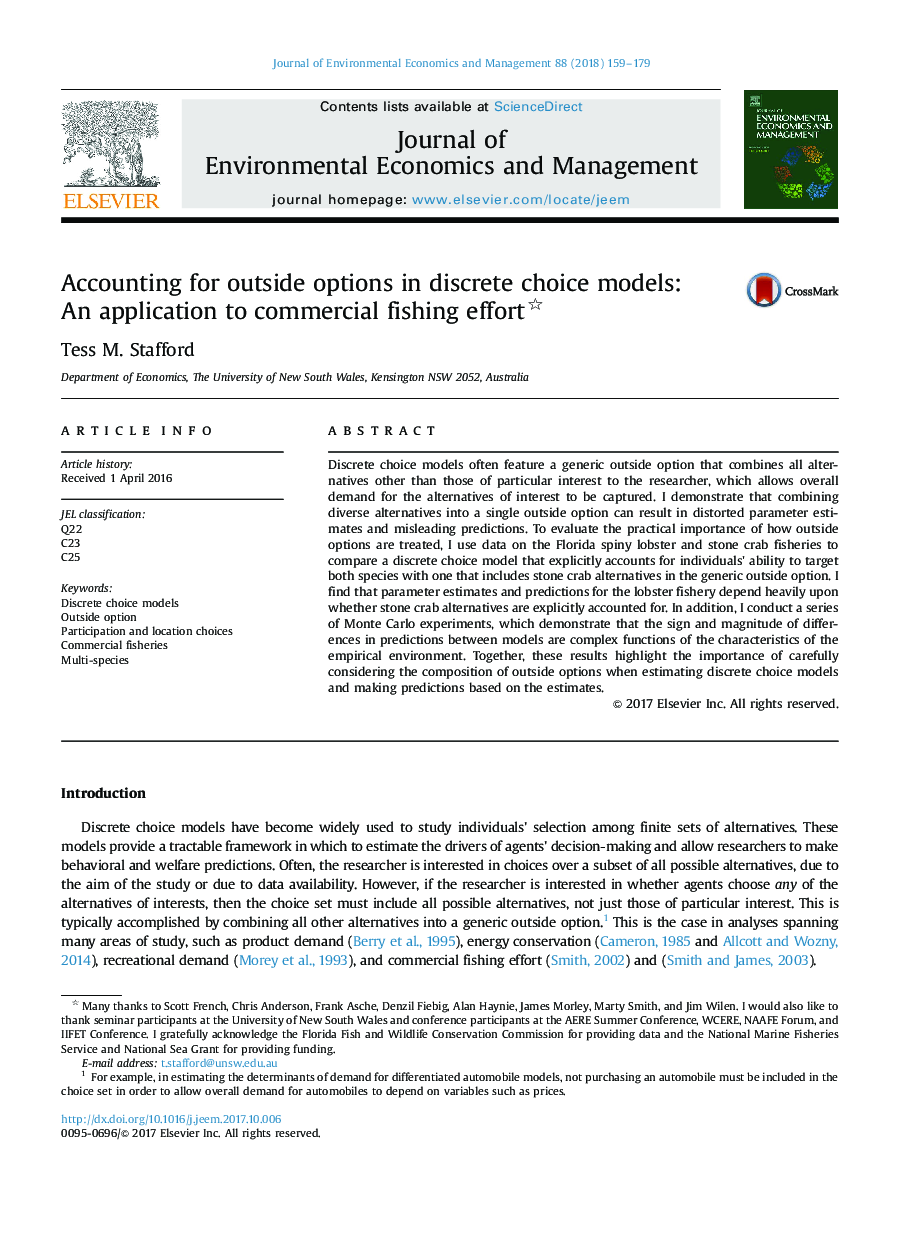| Article ID | Journal | Published Year | Pages | File Type |
|---|---|---|---|---|
| 7361332 | Journal of Environmental Economics and Management | 2018 | 21 Pages |
Abstract
Discrete choice models often feature a generic outside option that combines all alternatives other than those of particular interest to the researcher, which allows overall demand for the alternatives of interest to be captured. I demonstrate that combining diverse alternatives into a single outside option can result in distorted parameter estimates and misleading predictions. To evaluate the practical importance of how outside options are treated, I use data on the Florida spiny lobster and stone crab fisheries to compare a discrete choice model that explicitly accounts for individuals' ability to target both species with one that includes stone crab alternatives in the generic outside option. I find that parameter estimates and predictions for the lobster fishery depend heavily upon whether stone crab alternatives are explicitly accounted for. In addition, I conduct a series of Monte Carlo experiments, which demonstrate that the sign and magnitude of differences in predictions between models are complex functions of the characteristics of the empirical environment. Together, these results highlight the importance of carefully considering the composition of outside options when estimating discrete choice models and making predictions based on the estimates.
Related Topics
Social Sciences and Humanities
Economics, Econometrics and Finance
Economics and Econometrics
Authors
Tess M. Stafford,
